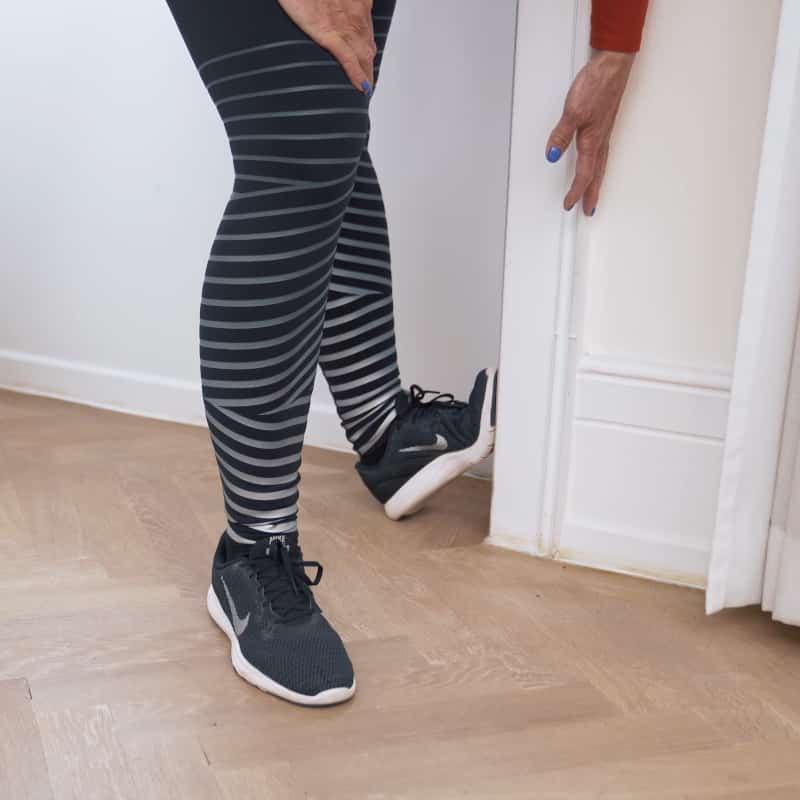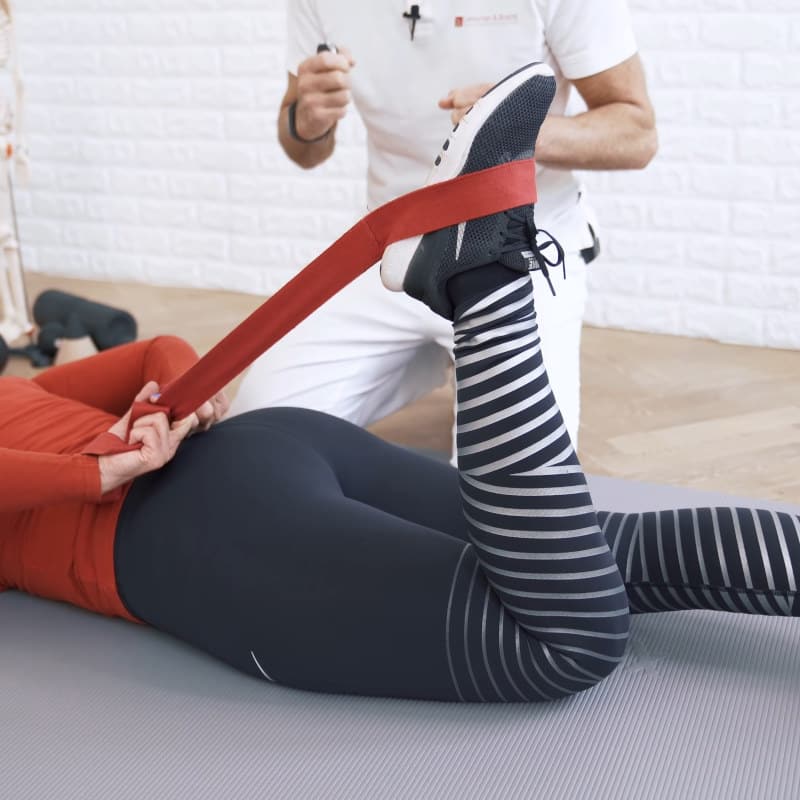Knee bursitis Exercises
Body Part:
Knee
Equipment:
Stretching Strap
Level:
Beginner
Body Part:
Knee
Equipment:
Stretching Strap
Level:
Beginner
Are you suffering from knee bursitis? Our stretching routine can help alleviate your pain and reduce the swelling. If you’d like to start exercising, jump to our video. If you’d like to learn more about knee bursitis, keep reading.
What is knee bursitis?
Knee bursitis — also known as housemaid’s knee, carpenter’s knee, and carpet layer’s knee — develops when one of the bursae surrounding the knee becomes inflamed. Bursae are small sacs filled with synovial fluid between our bones and soft tissue. Bursae are like cushions; they provide protection when we move by minimizing friction. When a bursa becomes irritated, it overproduces synovial fluid and swells. A swollen bursa puts pressure on the surrounding parts, causing pain and discomfort.
Our bodies contain over 150 bursae 1). Each of your knees may have as many as 11 bursae; four major bursae surround each knee 2). They are:
Symptoms of knee bursitis are that the affected area is:
You may feel pain when you move your knee or when it is stationary, and your range of motion may be reduced.
If you have prepatellar bursitis, the most common form, you may develop a squishy lump at the front of your knee. If you have infrapatellar bursitis, a lump may develop on the front of your shin below your kneecap. Infrapatellar bursitis may also cause pain that radiates down your shin.
What causes knee bursitis?
You may develop knee bursitis if you:
You may be at risk of developing knee bursitis if your job requires you to kneel continually or for long periods, especially on hard surfaces. Frequent pressure on the knee irritates the bursa and causes inflammation. Knee bursitis is common among roofers, coal miners, gardeners, plumbers, and carpet layers.


For this exercise, you’ll need our Stretching Strap.
Perform our knee bursitis exercises 6 days a week and leave 1 day for rest. When you notice that your knee pain is subsiding, you can adjust the frequency of your exercise.
Discover the causes and symptoms of knee pain, common conditions, and find out what helps knee pain — and what doesn’t. Plus, more home treatment exercises.
Become a Knee Pain Expert NowProblems with your meniscus? Damaged ligaments? Arthritis in the knee? Our Foam Rolling massages can help release muscle tension and healthify your fascia.
Massage Away Your Knee Pain NowWhy do your knees crack? Read this article to find out. Plus, silence your clamorous caps and relieve muscle tension with our 10-minute exercise routine.
Quiet Cracking Knees